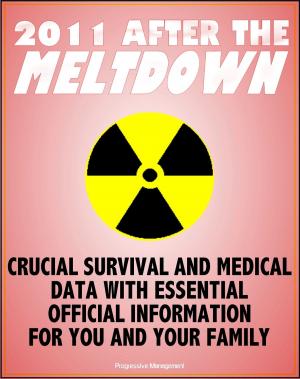Best Practices for Planning a Cybersecurity Workforce and the National Initiative for Cybersecurity Education (NICE) Cybersecurity Capability Maturity Model - Benefits of Workforce Planning
Nonfiction, Computers, Networking & Communications, Computer Security, Operating Systems, Application Software| Author: | Progressive Management | ISBN: | 9780463177426 |
| Publisher: | Progressive Management | Publication: | June 3, 2018 |
| Imprint: | Smashwords Edition | Language: | English |
| Author: | Progressive Management |
| ISBN: | 9780463177426 |
| Publisher: | Progressive Management |
| Publication: | June 3, 2018 |
| Imprint: | Smashwords Edition |
| Language: | English |
Two excellent reports have been professionally converted for accurate flowing-text e-book format reproduction.
Book 1: Cybersecurity Capability Maturity Model White Paper - Cybersecurity is a leading national security challenge facing this country today. An emerging topic of importance is how organizations track, assess, grow, and shape their workforce. Many organizations have turned to workforce planning as a way to understand their current cybersecurity human capital skills and abilities as well as potential infrastructure needs. The National Initiative for Cybersecurity Education (NICE) evolved from the Comprehensive National Cybersecurity Initiative (CNCI), Initiative 8 - Expand Cyber Education, to develop a technologically-skilled and cyber-savvy workforce with the right knowledge and skills. Towards these ends, Component 3 of NICE is focused on the cybersecurity Workforce Structure — specifically talent management and the role of workforce planning in developing the national cybersecurity workforce. NICE has initiated discussions and issued guidance on workforce planning for cybersecurity best practices. In spring 2012, NICE published a white paper titled: Best Practices for Planning a Cybersecurity Workforce1, which introduces workforce planning methodologies for cybersecurity. This White Paper introduces a qualitative management tool, a Cybersecurity Workforce Planning Capability Maturity Model, to help organizations apply the best practice elements of workforce planning in analyzing their cybersecurity workforce requirements and needs.
Contents * EXECUTIVE SUMMARY * THE CYBERSECURITY LANDSCAPE: NOW'S THE TIME TO PLAN * MAKING THE CASE: A NEED FOR CYBER WORKFORCE PLANNING CAPABILITY * The Practice of Workforce Planning * The Benefits of Workforce Planning * INTRODUCTION TO THE NICE CMM DEFINING WORKFORCE CMMS * Existing Models * Components of the NICE CMM * Criteria Areas * Maturity Levels * DETAILED OVERVIEW OF THE NICE CMM Process and Analytics * Integrated Governance * Skilled Practitioners and Enabling Technology * ACHIEVING MATURITY * Differing Maturity Goals * Assessing Current Capability * Step One: Gather Data * Step Two: Analyze Data and Determine Current Maturity * Step Three: Progressing in Maturity * BENEFITS OF ACHIEVING CYBERSECURITY WORKFORCE PLANNING MATURITY * CONCLUSION
Book 2: Best Practices for Planning a Cybersecurity Workforce White Paper - The Nation's cybersecurity workforce is at the forefront of protecting critical infrastructure and computer networks from attack by foreign nations, criminal groups, hackers, and terrorist organizations. Organizations must have a clear understanding of their cybersecurity human capital skills and abilities as well as potential infrastructure needs to ensure protection against threats to information systems. Today, the cybersecurity community has evolved enough to define a National Cybersecurity Workforce Framework for understanding specialty areas of cybersecurity work and workforce needs. As a result, the field has reached a maturity level that enables organizations to inventory current capabilities. Next, as the nation seeks to build a skilled cybersecurity workforce, it will be necessary for organizations to mature further and begin forecasting future demand for the cybersecurity workforce.
B2-A * INTRODUCTION * B2-B * BACKGROUND * B2-C * APPROACH * B2-D * CYBERSECURITY REQUIREMENTS * B2-E * CONCLUSION
Two excellent reports have been professionally converted for accurate flowing-text e-book format reproduction.
Book 1: Cybersecurity Capability Maturity Model White Paper - Cybersecurity is a leading national security challenge facing this country today. An emerging topic of importance is how organizations track, assess, grow, and shape their workforce. Many organizations have turned to workforce planning as a way to understand their current cybersecurity human capital skills and abilities as well as potential infrastructure needs. The National Initiative for Cybersecurity Education (NICE) evolved from the Comprehensive National Cybersecurity Initiative (CNCI), Initiative 8 - Expand Cyber Education, to develop a technologically-skilled and cyber-savvy workforce with the right knowledge and skills. Towards these ends, Component 3 of NICE is focused on the cybersecurity Workforce Structure — specifically talent management and the role of workforce planning in developing the national cybersecurity workforce. NICE has initiated discussions and issued guidance on workforce planning for cybersecurity best practices. In spring 2012, NICE published a white paper titled: Best Practices for Planning a Cybersecurity Workforce1, which introduces workforce planning methodologies for cybersecurity. This White Paper introduces a qualitative management tool, a Cybersecurity Workforce Planning Capability Maturity Model, to help organizations apply the best practice elements of workforce planning in analyzing their cybersecurity workforce requirements and needs.
Contents * EXECUTIVE SUMMARY * THE CYBERSECURITY LANDSCAPE: NOW'S THE TIME TO PLAN * MAKING THE CASE: A NEED FOR CYBER WORKFORCE PLANNING CAPABILITY * The Practice of Workforce Planning * The Benefits of Workforce Planning * INTRODUCTION TO THE NICE CMM DEFINING WORKFORCE CMMS * Existing Models * Components of the NICE CMM * Criteria Areas * Maturity Levels * DETAILED OVERVIEW OF THE NICE CMM Process and Analytics * Integrated Governance * Skilled Practitioners and Enabling Technology * ACHIEVING MATURITY * Differing Maturity Goals * Assessing Current Capability * Step One: Gather Data * Step Two: Analyze Data and Determine Current Maturity * Step Three: Progressing in Maturity * BENEFITS OF ACHIEVING CYBERSECURITY WORKFORCE PLANNING MATURITY * CONCLUSION
Book 2: Best Practices for Planning a Cybersecurity Workforce White Paper - The Nation's cybersecurity workforce is at the forefront of protecting critical infrastructure and computer networks from attack by foreign nations, criminal groups, hackers, and terrorist organizations. Organizations must have a clear understanding of their cybersecurity human capital skills and abilities as well as potential infrastructure needs to ensure protection against threats to information systems. Today, the cybersecurity community has evolved enough to define a National Cybersecurity Workforce Framework for understanding specialty areas of cybersecurity work and workforce needs. As a result, the field has reached a maturity level that enables organizations to inventory current capabilities. Next, as the nation seeks to build a skilled cybersecurity workforce, it will be necessary for organizations to mature further and begin forecasting future demand for the cybersecurity workforce.
B2-A * INTRODUCTION * B2-B * BACKGROUND * B2-C * APPROACH * B2-D * CYBERSECURITY REQUIREMENTS * B2-E * CONCLUSION















